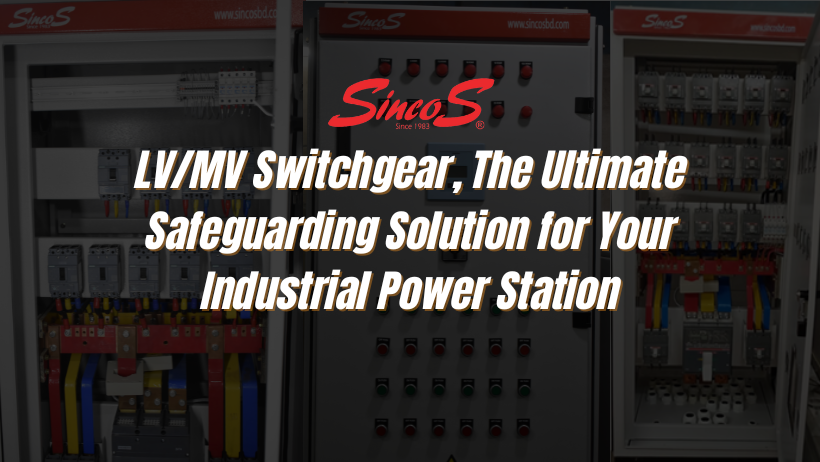A power surge is a common and dangerous problem that can cause serious damage to existing electric infrastructure. Circuits are designed to handle a certain amount of electricity, and when the amount surpasses, the wiring will overheat. A fire could occur as a result of this, which could damage critical electrical components. Switchgear could be the best alternative to ensure the safety & security of your electric power system. Let’s take a look at what exactly a switchgear is & the different types of switchgear.
Switchgear consists of a wide range of switching devices that all serve almost similar purposes; those are controlling, safeguarding, and isolating power systems. It Incorporates circuit breakers, metering equipment, and other similar types of equipment that regulate and meter power.
Low Voltage Switchgear
Before choosing a low-voltage main distribution system, first, you have to know about its usage, availability, and further opportunities for extension. The requirements for power distribution are extremely diverse.
The LV Switchboard would be fed by such a main transformer. That biggest transformer that could be used to serve a 400V AF Switchgear board is indeed a 4 MVA transformer that could produce up to 6300A and withstand 100kA current harmonics.
However, if multiple transformers and/or main LV Switchboards are required for robustness, multiple transformers and/or main LV Switchboards may be used. Power is transferred through some of these boards and, if necessary, sub-boards using a technique known as sub-distribution. Sub-boards are used to transport electricity to or as close to the point of use as possible.
The function of LV Switchgear
The role of the LV switchgear includes the following:
Electrical protection – This protects the circuit elements from mechanical and thermal stress. In addition, it provides protection for persons if the insulation fails. Electrically powered appliances and apparatus are protected by it.
Isolation of parts of installation – This allows the isolated parts of the system to be worked on while ensuring the safety of the rest of the system.
Remote or local switching – The switchgear control function allows operating system personnel to modify a loaded system according to requirements. It includes functional control, maintenance operations on the power system, and emergency switching.
Medium Voltage Switchgear
There are many ways in which switchboards can be configured. It depends on the level of dependability, fault tolerance, and adaptability required. Voltage level, effective voltage, constant voltage tolerance voltage, or impulse voltage are all parameters for manufactured medium-voltage (MV) switchgear panels.
MV Insulating methods and purposes determine the class of switchgear. If used as intended, a switch is a piece of equipment that opens an electric circuit by mechanical action, halting the flow of electricity without inflicting lasting harm to the equipment. A switch can be a circuit breaker or a disconnector/isolator.
Disconnectors or isolators are devices designed to physically open an electric circuit under normal circumstances. Circuit breakers (CBs) are devices that open electric circuits when an overcurrent or failure occurs. The trip signal is normally sent by a protective relay.
The function of MV Switchgear
Medium voltage switchgear should be able to perform the following functions:
Short circuit current interruption
Switching capacitive currents
Switching the inductive currents
Performing normal ON/OFF switching
Other special applications
Ultimately, all the functions mentioned must be undertaken with a high degree of reliability and safety.
Usage of LV/MV Switchgear
Switchgear may be used in different areas that, include the following:
Industrial power distribution in factories and plants where attention must be paid to overload and surge protection. The switchgear helps in ensuring organized and better power distribution in machines within the industrial unit.
Surge and voltage regulation is required in solar power generation because it regulates the flow of electric current from the main unit.
Power stations – Main and sub-power distribution units that require
Residential power distribution – Switchgear may be installed in residential complexes or in locations where metal-enclosed and metal-clad switchgear.
Overall, electric energy is a vital part of life. Therefore, electricity distribution must be done in a manner that is secure and safe. Security levels can be maintained at the different distribution units as well as substations through the installation of safety mechanisms and devices. Although numerous mechanisms can help safeguard electrical connections in industrial and residential areas, the use of switchgear is recommended because of its features and functions.
Conclusion
There are multiple companies in our country that are meeting the need for switchgear among them, Sincos Automation Technologies Ltd stand out in the market. They are fully focused on providing complete solutions in industrial automation technologies. With that mission, they are currently manufacturing and supplying high-quality LV and MV power equipment (VCB, ACB, MPCB, MCCB, MCB, Magnetic Contactor, Distribution Panel, etc.) Sub-station, LT Panel, PFI Panel, and MCC Panel to ensure the safety and security of your electric equipment.
